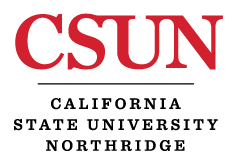Program: B.S., Mathematics
Applied Mathematical Sciences
Overview
The B.S. degree in Mathematics is designed for students who wish to pursue occupational careers involving applied mathematics or wish to prepare for graduate work in applied mathematics.
Double Major
A student pursuing either a B.A. or a B.S. degree may combine a second major with Mathematics. In this circumstance, upon approval of an advisor, 6 units of Upper Division electives may be satisfied by courses in the second major. The remaining electives must be taken in the Department of Mathematics. Under certain rare conditions, the physics requirement in the Lower Division core may be replaced by appropriate coursework in the second major. Prior approval must be obtained from an advisor and the department chair for this latter occurrence.
Program Requirements
Requirements
In addition to University residency requirements for a bachelor’s degree, the student must complete a minimum of 18 units of Upper Division Mathematics in residence at CSUN with the approval of a Mathematics advisor. Students in B.A. degree programs must fulfill the University requirement of at least 40 Upper Division units overall.
It is assumed that the student has a facility in mathematics normally gained by recent completion of 4 years of high school mathematics through trigonometry and “Mathematical Analysis.’’ Because of the variation in curricula at the high school level, it is necessary to obtain satisfactory scores on the Mathematics Placement Test (MPT) and Entry Level Mathematics Exam (ELM) to enter the first mathematics course in the program, MATH 150A. Without satisfactory scores, a student will need to complete additional coursework.
1. Lower Division Core for All Programs (23-24 units)
COMP 106/L Computing in Engineering and Science and Lab (2/1)
or COMP 110/L Introduction to Algorithms and Programming and Lab (3/1)
The student must complete the Lower Division core and one of the Mathematics options, and he or she must have at least a 2.0 GPA for all Upper Division units required in the major.
2. Upper Division Required Courses (15 units)
MATH 320 Foundations of Higher Mathematics (3)
MATH 340 Introductory Probability (3)
MATH 350 Advanced Calculus I (3)
MATH 382/L Introduction to Scientific Computing and Lab (2/1)
MATH 494 Practical Experience in Mathematics (3)
3. Upper Division Electives (24 units)
Choose (with an advisor) 24 units from among (1) all Upper Division Math courses (excluding MATH 310, 310L, 311, 312, 331, 391 and 490); and (2) approved courses in other departments. At least 12 units must be in Mathematics. Students are encouraged to take courses outside the Mathematics department, especially Upper Division courses in the sciences, engineering and economics. All courses must have the approval of an advisor prior to enrollment. Students in this option must meet with an advisor in their junior year and file a program form outlining the planned coursework with the Mathematics department.
4. General Education (48 units)
Undergraduate students must complete 48 units of General Education as described in this Catalog.
Basic Skills Mathematics and Lifelong Learning are satisfied by required courses in the major. PHYS 220A/AL partially satisfies the Natural Sciences section.
Total Units in the Major/Option: 62-63
General Education Units: 38
Additional Units: 19-20
Total Units Required for the B.S. Degree: 120
Contact
Chair: Rabia Djellouli
Santa Susana Hall (SN) 114
(818) 677-2721
Fax: (818) 677-3634
www.csun.edu/math
Student Learning Outcomes
- Demonstrate a command of the content usually associated with an undergraduate degree in mathematics.
- Communicate mathematical ideas clearly and cogently, both orally and in written form.
- Present clear and rigorous proofs.
- Build mathematical models and demonstrate problem-solving skills, including proper use of mathematical software.
- Understand the principles underlying various branches of mathematics and recognize their interrelationship.
- Experience mathematical discovery and independently read and understand mathematical articles or texts written at an undergraduate level.




